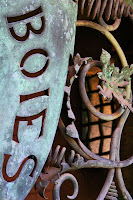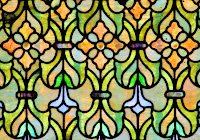I am so wet. Just returned home after shooting cemeteries in the rain on this gloomy Saturday morning. I thought I dressed appropriately. Forty degrees, layers, rain parka. Umbrella to keep the rain off the cameras.
Why photograph cemeteries in the rain? I noticed some new images my friend Rachel posted on Instagram (@photosofcemeteries) – darkly brooding, slick and wet images of gravestones and monuments. Treacherous sky, the whole nine yards. I was a bit envious! I needed to get out there in some rain and see if I could produce something half as good! The work of other artists can stimulate you to push yourself.
Years ago, I started a public Facebook page called “Cemeteries in the Rain,” (link) and many people post images on it. I like the whole idea, but had kind of gotten out of practice. I mean, it can be a rather grim experience to be out there slogging around in the mud. And sometimes it doesn’t pay off.
"I wanted the rain to come," says Greg Jackson in his novel, The Dimensions of a Cave, "- for the way it closed and narrowed the scope of a world gone too large, dissolving dreams like crusts of dirt that settle on the streets." So when I heard the Saturday weather forecast, I planned to get out there. And so I did, the day before Palm Sunday. Hit the highway at 8 a.m. and hit the first cemetery in the pouring rain at 8:30, Westminster Cemetery in Bala Cynwyd, PA. Turns out my rain parka was not waterproof. Why even make such a thing? Reminds me of the time, years ago, with my first family, I bought a large tent and we went camping in Cape May, NJ, for a week. Three little kids. Third night, and as the 1970s band Atlanta Rhythm Section sang, “It was an all night rain….” Why they would make a tent that is not waterproof will forever puzzle historians. Needless to say, I got camping out of my system at a relatively early age.
I spent an hour at Westminster shooting the slick bronze angels, capturing the reflections, the water pooling on granite, and then drove out to West Philly to shoot in Cathedral Cemetery. I chose these two locations because I thought each would have a number of flat, horizontal monuments that would slick up or collect water that would artistically reflect the surroundings (as Rachel has done). Shooting such things, bent over, umbrella over the camera, exposed my backside to the elements. I began to get wetter. It was also kind of painful jumping in and out of the car, as my left hip has been giving me problems. Having it replaced on April 29. No cartilage left – bone on bone. Not only does great art come from great pain, but mediocre art does as well.
I was also familiar with the layout of these cemeteries, so I mainly drove around to the various spots I thought would look good in the rain. I wanted to shoot the iron angels on the gate to this family plot in Cathedral, but to my surprise, the gate was gone. Stolen, maybe. I had been here a couple years ago and the gate was still there. One of the uniquely interesting details in this graveyard, or, it was. Victorian decorative art now in someone's private collection. Sad. The patina stain in the photo of the crypt cover below suggests a missing bronze cross. Stolen as well, I assume.
I have photographed cemeteries in the snow much more frequently, and you may not be too surprised to learn that I also started a public Facebook page called, you guessed it – “Cemeteries in the Snow” (link). Even though the weather and accumulated snow make this type of shooting quite challenging, I think shooting in the rain is even more so. So total credit to Rachel for creating such wonderful images under these conditions! And thank you for igniting that spark of creativity for me – which is one thing artists provide for each other, right? Also, you can better appreciate any art form, any media, after trying to do it yourself.
And speaking of water, I knew my shoes would get wet and muddy, but I hadn’t planned on getting soaked through to bare skin, despite three layers of clothing! Even my belt was wet. After about three hours of slogging around these two cemeteries, I headed home. Gave up on the third stop, which was going to be West Laurel Hill Cemetery. Drove back to my neighborhood, parked a block from my house, unloaded the car and stomped down the little street. My neighbor, jumping into his car, probably wondering what in the world I was up to now. This is the fellow who during Covid, knocked on my front door (I wasn’t home) and handed a large shopping bag to my wife, saying, “I’m returning Ed’s skulls.”
Got inside the house, turned up the heat, took off all the layers and hung them to dry. Jeans, socks, even my underwear was wet. Dry clothes, hot coffee, toasted bagel and crème cheese from the little Jewish bakery on Passyunk, Essen. Looking at my images, I got some decent ones. One compositional element I had no control over was the sky. Dark clouds would have been preferable, though for most of the images, all I had was white, a nitid sky. Not terribly interesting. But, this is just another detail to pay attention to in the future. I used to call a dark cloudy sky front-lit by a setting sun an “angel sky,” because I would wait for such conditions to present themselves, then I would run out to a cemetery to photograph white marble angel statues against the black sky. Next time.
And for that next time, I shall dress more appropriately. It’s supposed to rain on Tuesday. I do have a parka that actually is waterproof. Now I’m sneezing. Great.



























































